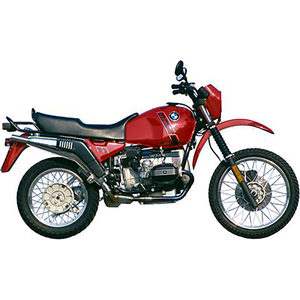BMW R 80 GS (1990–1994): The Boxer That Redefined Adventure Riding
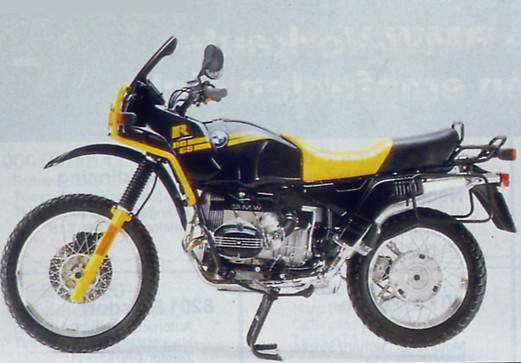
Introduction: The Birth of a Legend
The BMW R 80 GS stands as a monument to the era when adventure motorcycles began evolving from niche off-road machines into versatile companions capable of crossing continents. Produced between 1990 and 1994, this generation of the R 80 GS refined BMW’s vision of a dual-purpose motorcycle, blending Teutonic engineering with a dash of rebellious spirit. With its air-cooled boxer engine, shaft drive, and the iconic Paralever rear suspension, this bike wasn’t just a motorcycle—it was a declaration of independence for riders seeking roads less traveled.
From the Sahara Desert to Alpine passes, the R 80 GS earned its stripes as a machine that laughs at pavement endings. Let’s dive into what makes this BMW a timeless classic—and why it still captivates riders today.
Design & Ergonomics: Form Follows Function
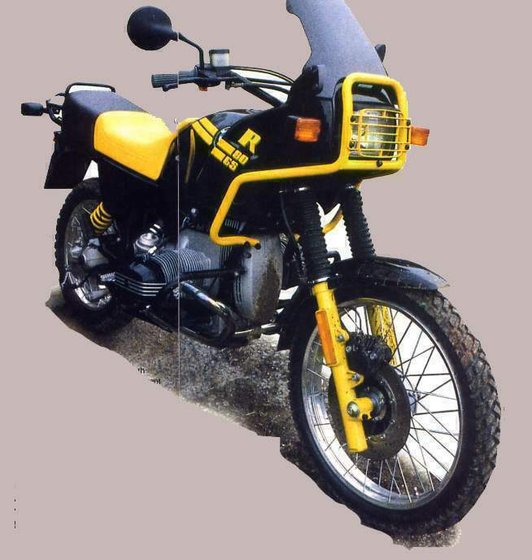
The R 80 GS’s design is a masterclass in purposeful simplicity. The rectangular headlight, mounted on a minimalist fairing with “roo-bars” (a nod to its off-road intentions), gives it a rugged, no-nonsense face. The adjustable windshield—a novelty for its time—allows riders to tweak airflow on the fly, though it’s more about deflecting bugs than offering touring-level wind protection.
At 850 mm (33.5 inches), the seat height is commanding, catering to taller riders but requiring tiptoes for those under 175 cm (5’9”). The upright riding position strikes a balance between control and comfort, with wide handlebars offering leverage for maneuvering through mud or traffic. The tubular steel frame, weighing in at 215 kg (474 lbs) wet, feels substantial but not unwieldy—a testament to BMW’s focus on low-center mass.
Practical touches abound: crash bars protect the iconic horizontally opposed cylinders, the high-mounted front fender shrugs off mud, and the 24-liter (6.3-gallon) fuel tank promises 400 km (250 miles) between fill-ups. This is a bike designed to wear its scratches proudly.
Engine Performance: Torque Over Horsepower
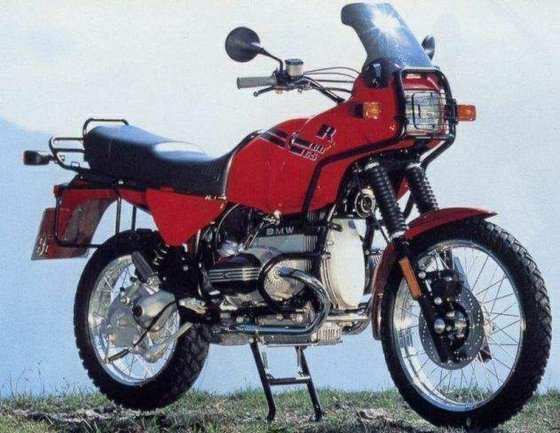
The heart of the R 80 GS is its 798 cc air-cooled boxer twin, producing 50 HP (37 kW) at 6,500 RPM and a stump-pulling 61 Nm (44 lb-ft) of torque at 5,000 RPM. These numbers don’t set spreadsheets ablaze, but on the road—or lack thereof—they tell a different story.
The engine’s charm lies in its low-revving character. From idle, the boxer delivers creamy torque that lets you crawl over rocky trails or overtake trucks without downshifting. The Bing constant-depression carburetors are faultlessly reliable, though they demand occasional synchronization (a 20-minute job with basic tools).
On highways, the R 80 GS settles into a relaxed 120 km/h (75 mph) cruise, vibrations muted by rubber-mounted engine mounts. Push beyond 140 km/h (87 mph), and the windblast reminds you this isn’t a sport-tourer—though the claimed 170 km/h (106 mph) top speed is achievable with patience.
Fuel economy hovers around 6.3 L/100 km (37 mpg), but that’s secondary to the joy of hearing the boxer’s syncopated thump echo off canyon walls.
Handling & Suspension: Confidence on Any Surface
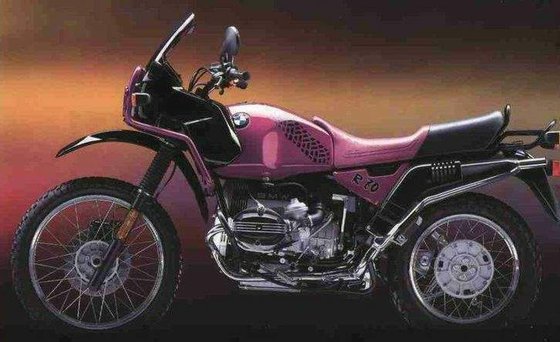
BMW’s Paralever rear suspension revolutionized shaft-driven motorcycles by eliminating the “jacking” effect under acceleration. Paired with Marzocchi’s 40 mm telescopic forks (225 mm / 8.8 inches of travel), the R 80 GS soaks up potholes and gravel with aplomb.
The steering is deliberate, not flickable—a trait amplified by the 21-inch front wheel. Yet, the bike’s low center of gravity (courtesy of those protruding cylinders) makes tight maneuvers surprisingly manageable. In corners, the GS leans with a stately grace, limited only by the cylinder heads’ ground clearance.
Off-road, the Paralever shines. Unlike chain-driven rivals, there’s no maintenance-hungry drivetrain to baby. The shaft drive lets you ford streams without worrying about submerged chains, though deep ruts can challenge the 200 mm (7.87-inch) ground clearance.
Brakes & Tires: Adequate, Not Adventurous
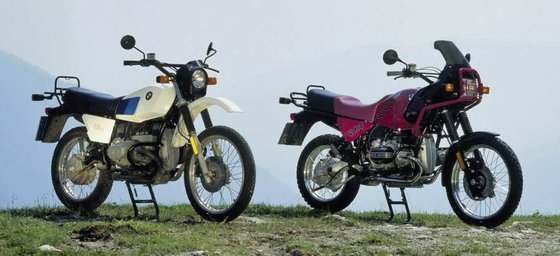
The single 285 mm front disc and 200 mm rear drum brake are period-typical—sufficient but uninspiring. Stopping from 100 km/h (62 mph) takes 46.3 meters (152 feet), a figure that demands anticipation on wet roads. Many owners upgrade to aftermarket pads or even a dual-disc setup (a popular MOTOPARTS.store offering).
Tire choice dramatically shapes the GS’s personality. The stock 90/90-21 front and 130/80-17 rear excel on gravel but feel vague on asphalt. Swapping to Metzeler Tourance or Michelin T66 rubber transforms road manners without sacrificing dirt capability.
Competition: How the GS Stacks Up
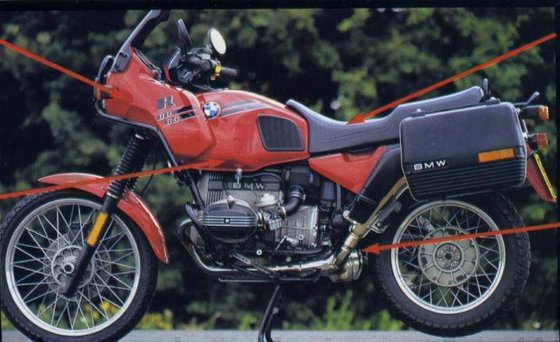
In the early ’90s, the R 80 GS faced fierce rivals:
- Suzuki DR750/800 Big
- Pros: Lighter (194 kg / 428 lbs), superior suspension travel, lower seat height.
- Cons: Single-cylinder vibes, chain maintenance, plasticky build quality.
-
Verdict: Better for hardcore off-roaders; the GS wins on touring comfort.
-
Honda Africa Twin (XRV650)
- Pros: Liquid-cooled V-twin, sharper handling.
- Cons: Complex maintenance, higher cost.
-
Verdict: A toss-up for reliability; the GS’s shaft drive edges ahead for globetrotting.
-
KTM LC4 600
- Pros: Lighter, more aggressive off-road.
- Cons: Sparse dealer network, harsh seat.
- Verdict: The KTM is a desert racer; the GS is a desert crosser.
The BMW’s ace card? Its shaft drive and boxer engine, which made it the choice for riders prioritizing durability over outright agility.
Maintenance: Keeping the Boxer Alive
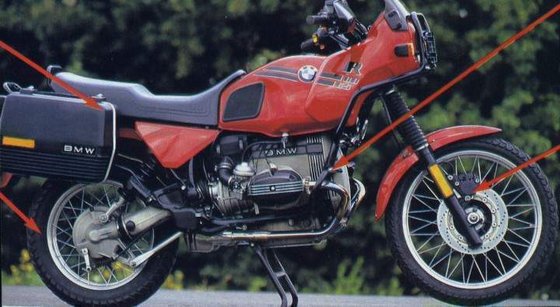
The R 80 GS is a mechanic’s dream—or a novice’s best friend. Key upkeep points:
- Valve Adjustments: Every 5,000–7,500 km (3,100–4,660 miles). Intake: 0.10 mm (0.004 in), exhaust: 0.20 mm (0.008 in). Cold adjustments only!
- Oil Changes: 2.25L (2.38 quarts) of 20W-50 mineral oil. Skip synthetics—they’ll make the wet clutch slip.
- Carb Sync: Use a manometer every 10,000 km (6,200 miles). Rough idling? Check the 0.75-turn air screw setting.
- Shaft Drive: Replace final drive oil (260 ml / 8.8 oz of SAE 90 GL-5) annually.
Common upgrades available at MOTOPARTS.store:
- Brake Upgrades: Spiegler wave rotors, steel-braided lines.
- Suspension: Öhlins shocks, progressive fork springs.
- Electrics: LED auxiliary lights, modern regulators.
Real-World Ownership: A Rider’s Perspective
To ride the R 80 GS is to understand why BMW’s GS line became legendary. The engine’s torque lets you tractor up hillsides, while the shaft drive ensures you’ll never scramble for a chain lube in Mongolia. It’s not perfect—the stock suspension wilts under heavy loads, and the drum rear brake feels archaic—but these flaws are fixable.
One owner’s tale says it all: After a collision with a deer at 120 km/h (75 mph), the GS’s crash bars absorbed the impact, leaving the rider unharmed and the bike rideable. Try that with a crotch rocket.
Legacy & Modern Upgrades
Today, the R 80 GS thrives in the hands of retro-modders. Popular MOTOPARTS.store upgrades include:
- High-Output Alternators: For powering GPS and heated gear.
- Aftermarket Exhausts: Boosting the boxer’s bass note.
- LED Lighting Kits: Improving visibility without taxing the 280W alternator.
Conclusion: The Adventure Starts Here
The BMW R 80 GS isn’t just a motorcycle—it’s a passport. It’ll carry you across continents, teach you mechanical empathy, and turn every gas station into a story-swapping session. While newer bikes boast more power or gadgets, none match the GS’s blend of simplicity and capability.
At MOTOPARTS.store, we keep these legends rolling. Whether you need a carb rebuild kit or crash bars for your next Sahara jaunt, we’ve got the parts to make your GS immortal.
Ride far, ride free—and let the boxer’s heartbeat guide your way.






Specifications sheet
| Engine | |
|---|---|
| Stroke: | Four-stroke |
| Ignition: | Battery ignition |
| Max power: | 37 kW | 50.0 hp |
| Alternator: | Bosch 12 V/280 W |
| Max torque: | 61 Nm |
| Fuel system: | 2 x Bing constant depression carburetors |
| Lubrication: | Wet sump |
| Max power @: | 6500 rpm |
| Displacement: | 798 ccm |
| Max torque @: | 5000 rpm |
| Configuration: | Oposite |
| Cooling system: | Air cooled |
| Compression ratio: | 8.2:1 |
| Number of cylinders: | 2 |
| Dimensions | |
|---|---|
| Wheelbase: | 1514 mm (59.6 in) |
| Dry weight: | 194 |
| Wet weight: | 215 |
| Seat height: | 850 mm (33.5 in) |
| Overall width: | 1000 mm (39.3 in) |
| Overall height: | 1165 mm (45.8 in) |
| Overall length: | 2290 mm (90.1 in) |
| Ground clearance: | 200 mm (7.87 in) |
| Fuel tank capacity: | 26 L (6.87 US gal) |
| Drivetrain | |
|---|---|
| Clutch: | Dry single plate, with diaphragm spring |
| Gear Ratio: | 1st 4.40 / 2nd 2.86 / 3rd 2.07 / 4th 1.67 / 5th 1.50:1 |
| Final drive: | shaft |
| Transmission: | 5-speed |
| Rear Wheel Ratio: | 1:3.20 |
| Maintenance | |
|---|---|
| Rear tire: | 130/80-17 |
| Engine oil: | 20W50 |
| Front tire: | 90/90-21 |
| Idle speed: | 900 ± 100 rpm |
| Brake fluid: | DOT 4 |
| Spark plugs: | NGK BP6ES or NGK BPR6EIX |
| Spark plug gap: | 0.7 |
| Forks oil capacity: | 0.85 |
| Engine oil capacity: | 2.5 |
| Gearbox oil capacity: | 0.8 |
| Final drive oil capacity: | 0.26 |
| Engine oil change interval: | Every 5000 km or 2 years, whichever comes first |
| Valve clearance (intake, cold): | 0.10 mm |
| Valve clearance check interval: | Every 7500 km |
| Valve clearance (exhaust, cold): | 0.20 mm |
| Recommended tire pressure (rear): | 2.5 bar (36 psi) solo, 2.9 bar (42 psi) with passenger |
| Recommended tire pressure (front): | 2.2 bar (33 psi) |
| Chassis and Suspension | |
|---|---|
| Frame: | Double loop tubular frame with bolt-on rear section |
| Rear brakes: | ∅200mm Drum |
| Front brakes: | Single ∅285mm disc |
| Rear suspension: | BMW Paralever swinging arm |
| Front suspension: | ∅40mm Marzocchi telescopic hydraulic forks |
| Rear wheel travel: | 180 mm (7.0 in) |
| Front wheel travel: | 225 mm (8.8 in) |



